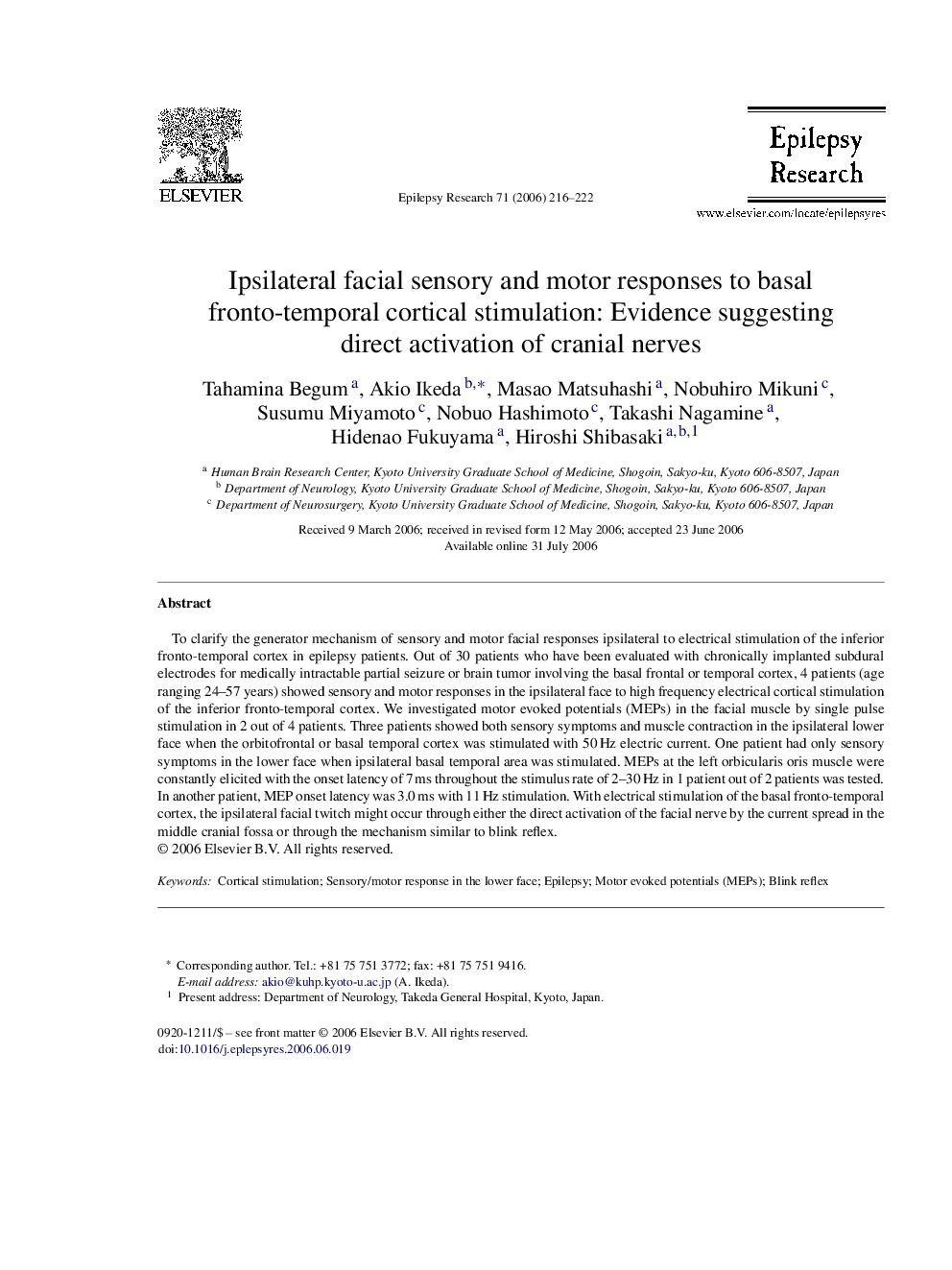| Article ID | Journal | Published Year | Pages | File Type |
|---|---|---|---|---|
| 3053263 | Epilepsy Research | 2006 | 7 Pages |
To clarify the generator mechanism of sensory and motor facial responses ipsilateral to electrical stimulation of the inferior fronto-temporal cortex in epilepsy patients. Out of 30 patients who have been evaluated with chronically implanted subdural electrodes for medically intractable partial seizure or brain tumor involving the basal frontal or temporal cortex, 4 patients (age ranging 24–57 years) showed sensory and motor responses in the ipsilateral face to high frequency electrical cortical stimulation of the inferior fronto-temporal cortex. We investigated motor evoked potentials (MEPs) in the facial muscle by single pulse stimulation in 2 out of 4 patients. Three patients showed both sensory symptoms and muscle contraction in the ipsilateral lower face when the orbitofrontal or basal temporal cortex was stimulated with 50 Hz electric current. One patient had only sensory symptoms in the lower face when ipsilateral basal temporal area was stimulated. MEPs at the left orbicularis oris muscle were constantly elicited with the onset latency of 7 ms throughout the stimulus rate of 2–30 Hz in 1 patient out of 2 patients was tested. In another patient, MEP onset latency was 3.0 ms with 11 Hz stimulation. With electrical stimulation of the basal fronto-temporal cortex, the ipsilateral facial twitch might occur through either the direct activation of the facial nerve by the current spread in the middle cranial fossa or through the mechanism similar to blink reflex.
